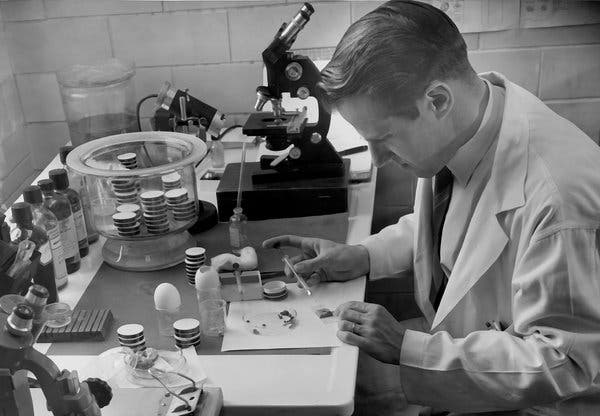The following is an excerpt from Kris Newby’s new book: Bitten.
D iving straight back into his work at the lab, he began by analyzing the hundreds of Ixodes ricinus tick samples he’d brought home from Switzerland, searching for what was making the goatherds sick. He and the Swiss team found three microbes never before seen in this species of tick: an unidentified spotted fever rickettsia; a whip-tailed cattle protozoan similar to babesia, called Trypanosoma theileri; and the infectious larval stage of a parasitic deer worm, Dipetalonema rugosicauda.5

Willy sat at his microscope late into the night, snipping off tick legs and letting drops of their hemolymph fall onto a glass slide; mixing the drops with a stain that would make the rickettsias glow under a dark field microscope; and dissecting tick parts to see where the rickettsias hid inside the tick. Most established rickettsias evolve over time to find species-specific, competition-free niches within a tick.
But these rickettsias were everywhere, shimmering stars in Willy’s microscopic galaxy. They floated in the tick’s main body cavity, in the cell cytoplasm and nuclei, in the ovaries, and in all stages of tick sperm. It was worrisome. If the new organism could be transmitted from tick eggs to the thousands of newly hatched larvae, it would spread more rapidly into the ecosystem than most tick-borne diseases.

Under a higher magnification, Willy saw that the rickettsias existed in two form factors: a two-cells-fused-together (diplococcus) form and a sausage-like (rod) form. Both looked exactly like the newly discovered rickettsias he’d found on Long Island.
Willy began infecting lab animals with the Swiss rickettsias, and none of them got sick, but when he infected wild-type male meadow voles, a short-tailed species in the mouse family, they all came down with an infection of their testicular membrane sacks. On December 3, 1978, Willy nicknamed the new rickettsia from Switzerland “the Swiss Agent,” and wrote to Aeschlimann: “The organism is a bona fide rickettsia of the spotted fever group but quite different from Rickettsia rickettsii, R. sibirica, R. slovaca, and R. conorii,” he added, referring to the most virulent rickettsias….Join or login below to continue reading.




























